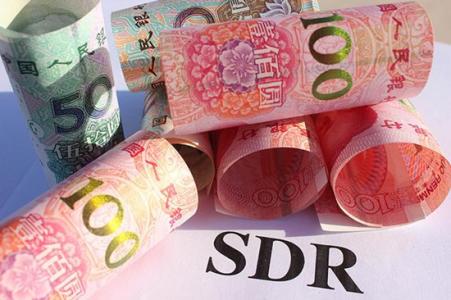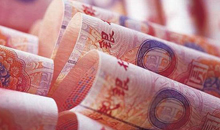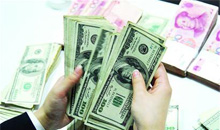
Last October, the International Monetary Fund officially added China’s currency, the renminbi, to the basket that makes up its Special Drawing Rights, the reserve asset in which the IMF denominates its loans to governments. Until then, only the U.S. dollar, the euro, the British pound, and the Japanese yen had enjoyed this exalted status. The addition of the renminbi to the SDR basket occasioned much celebration in China. Lu Jian, vice president of the Guangdong Guangken Rubber Group, hailedthe event as a “historic moment.” The People’s Bank of China (PBOC), the country’s central bank, announced that the move was “an affirmation of the success of China’s economic development and results of the reform and opening up of the financial sector.” As far as many Chinese were concerned, the IMF’s move signaled that the renminbi had become a leading global currency, befitting one of the world’s leading economies.
But some independent observers suggested that China’s official receptiongreatly exaggerated the significance of the event. After all, SDRs are little more than the accounting units in which the IMF conducts its transactions. There is no private market in SDRs. They are not used by importers and exporters to invoice and settle trade deals. Nor are they used in private financial transactions. The importance of adding therenminbi to the SDR basket, in this view, was more symbolic than real.
Still, symbols matter. In this case, they matter to Chinese policymakers, who in recent years have been making a concerted push to “internationalize” the renminbi by promoting its use as a unit of account, means of payment, and store of value for banks, firms, and governments undertaking international transactions. Since 2009, internationalizing the renminbi has been an explicit goal of Chinese policy. Beijing thereforecelebrated the renminbi’s addition to the SDR basket as evidence that it was making real progress in this direction.
China’s ambitions notwithstanding, the U.S. dollar remains unchallenged as the dominant international currency. The dollar accounts for more than 60 percent of the foreign exchange reserves held by central banks worldwide. Nearly 45 percent of all foreign exchange market transactions involve dollars. Virtually every transaction in the global oil market is denominated in dollars. Put simply, the dollar reigns supreme. So why would China attempt to challenge the dollar’s dominance, or even try to establish the renminbi as an alternative global currency?
In their recent books, the economists Eswar Prasad and Paola Subacchi set out to answer this question. Both authors take pains to place the attempt to internationalize the renminbi in its historical context. (Prasad reminds readers, for example, that China is no currency neophyte: it was the first country in the world to use paper money.) And both use China’s effort as a lens through which to view the bigger picture of the country’s ongoing economic and financial reforms.
Both authors also caution against exaggerated claims. Although Beijinghas worked hard to encourage the international use of the renminbi, its progress should not be overstated. Renminbi-denominated claims still account for only a tiny fraction—around one percent—of the foreign exchange reserves held by the world’s central banks. Although businesses now use the renminbi to pay for about ten percent of all global exports and imports, up from essentially zero a decade ago, most of thosepayments stem from China’s own trade—including trade with Hong Kong, China, which is not exactly a foreign country. Meanwhile, the renminbi’s share of the turnover in the global foreign exchange market stands at only two percent, according to the most recent Bank for International Settlements survey, conducted in April 2016. And according to the Society for Worldwide Interbank Financial Telecommunication (SWIFT),although the renminbi ranks as the fifth most frequently used currency in financial transactions, renminbi-based transactions still account for just 1.86 percent of the value of all global payments.
If China really wants to move the dial and achieve more than symbolicprogress on renminbi internationalization, it will have to move much faster on a set of broader economic and regulatory reforms. And it will also need to consider a less centralized approach to economic policymaking—a prospect that seems to hold little appeal for the country’s current leadership. All those changes would have to take place during a time when the international environment has become more uncertain, thanks in part to the election of Donald Trump as U.S. president. So although China has managed to upgrade the renminbi’s status, the road to further progress looks long and hard.
DOLLAR DEPENDENCE
When asked why Beijing is trying to turn the renminbi into a global currency, many in China have a ready answer: a first-class country should have a first-class currency. But beneath this nationalist sentiment lie other, more practical motives. Chinese officials see internationalizing the renminbi as a way to free themselves from dependence on the dollar. As long as Chinese banks and firms conduct the bulk of their cross-border business in dollars, they face potential losses every time the dollar-renminbi exchange rate changes. Until now, Chinese authorities have heavily managed the exchange rate so as to limit those fluctuations. But this is bound to change in the future, since with financial development and opening come larger capital inflows and outflows—and the need to let the exchange rate adjust as a buffer against their economic and financial effects.
Dependence on the dollar also exposes China to strategic risks. The fact that so many trade and financial transactions are settled in dollars gives the U.S. government leverage over the international payment system. After Russia invaded and annexed Crimea in 2014, Chinese officials watched with trepidation as the United States, the EU, and a number of NATO members imposed financial sanctions on Russia that, among other things, made it impossible to use credit cards issued by Russian banks outside Russia. That measure was enforceable only because such cardsrelied on dollar-based payment networks operated by U.S. firms such as Visa and Mastercard. The United States and its allies were also able to threaten Russia with exclusion from SWIFT, the electronic network that settles the vast majority of cross-border financial transactions, which are mainly conducted in dollars. This gave China pause and stiffened its resolve to develop an alternative international payment system not dependent on dollars or subject to disruption by
the United States.
Finally, some in China, including officials at the PBOC, see renminbi internationalization as a means of encouraging wider economic and financial reform. Foreigners will embrace the renminbi only if they can buy and sell it freely. In practice, this means that they must be able to engage in financial transactions in China itself, where the vast majority of renminbi-denominated financial assets reside. Beijing will therefore have to lift the restrictions it has long placed on foreigners (and Chinese citizens) who want to conduct cross-border financial transactions in China.
UNDER PRESSURE
Relaxing controls on financial transactions would allow more capital to flow into and out of China. To cope with that greater volatility, Beijing would need to complete additional financial reforms. The government would have to upgrade its supervisory and regulatory regimes to prevent banks and other financial firms from borrowing excessively and becoming overleveraged. It would have to strengthen corporategovernance to prevent Chinese enterprises from incurring too many short-term debts denominated in foreign currencies. Beijing would need to fully liberalize interest rates to eliminate artificial differences between onshore and offshore rates, which might encourage capital flight. And the PBOC would need to adjust its monetary policy more freely in response to changes in the direction of capital flows.
In their efforts to internationalize the renminbi, the PBOC and other authorities have already taken steps that enhance the access of foreign investors to Chinese financial markets. These measures have ratcheted up the pressure to undertake other reforms, such as those on the regulatory and corporate-governance fronts. But history suggests that using capital-account liberalization to force the pace of financial reform is a risky strategy. If other measures do not follow quickly, relaxing capital controls can lead to overborrowing, excessive risk taking, and, in the worst-case scenario, a financial crisis. Chinese leaders need only recall the Asian financial crisis of 1997–98, which reflected precisely that chain of events.
Read the full article here.
(Source: foreignaffairs.com)



























 沪公网安备31010402003309号
沪公网安备31010402003309号